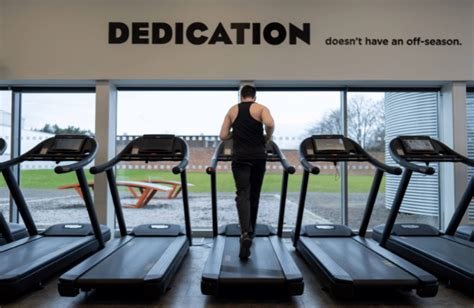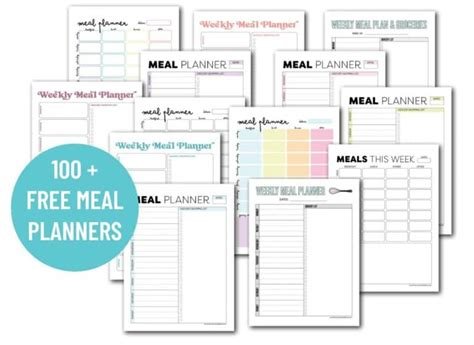In Enhance Your Focus: Simple Techniques to Improve Concentration, the article delves into various strategies for boosting concentration in daily life. It emphasizes the importance of focus, outlining how our environment can be optimized to foster better attention. Mindfulness practices are discussed as transformative techniques, while practical tips are provided to manage digital distractions effectively. The role of nutrition is highlighted in enhancing cognitive function, along with the benefits of incorporating physical activity into your routine. Additionally, the article addresses how sleep quality directly affects cognitive performance. Key takeaways wrap up the insights, offering actionable methods to enhance your daily focus and improve overall productivity.
Understanding The Importance Of Focus In Daily Life
To truly enhance your productivity and overall well-being, understanding the significance of focus is essential. Focus serves as the cornerstone of our ability to accomplish tasks, retain information, and engage with the world around us effectively. When we cultivate the skill of concentration, we lay the groundwork for not just effective work habits but also enhanced mental clarity and emotional resilience.
Moreover, life is filled with distractions that can easily derail our attention. By prioritizing focus, we become better equipped to handle these interruptions and make conscious choices that align with our long-term goals. This awareness also promotes a mindset that values deep work over shallow tasks, ultimately leading to greater satisfaction and success in both personal and professional domains.
- Key Reasons To Prioritize Focus
- Improves productivity and efficiency.
- Enhances the quality of your work output.
- Strengthens mental clarity and retention.
- Boosts creativity and problem-solving skills.
- Promotes better emotional management.
- Facilitates mindfulness and reduces stress.
- Encourages healthier lifestyle choices.
Additionally, when we can harness our focus, it leads to a profound sense of accomplishment and fulfillment. Every small task completed with full attention reinforces our ability to concentrate further, creating a positive feedback loop that enhances our overall capacity for focus. Therefore, investing time and energy into developing this crucial skill not only enriches our daily lives but also paves the path for long-term success.
How To Enhance Your Environment For Better Concentration
Creating an environment that fosters focus is essential for achieving high levels of productivity. A few simple adjustments can significantly impact your ability to concentrate and work efficiently. It’s crucial to recognize that the right environment, which aligns with your personal preferences, can drastically improve your performance. This process starts with deliberate choices that help you enhance your surroundings and make them conducive to concentration.
Steps To Create A Focus-Friendly Space
- Choose a quiet location free from noise disturbances.
- Incorporate natural light to boost mood and alertness.
- Organize your workspace by decluttering and keeping only essential items.
- Select comfortable furniture that supports good posture.
- Utilize calming colors that promote tranquility and focus.
- Add plants to improve air quality and enhance creativity.
- Consider soundscapes or noise-canceling tools if needed.
Incorporating these steps will help not only to enhance your focus but also to provide an environment that inspires creativity and productivity. Making small alterations, such as incorporating elements of nature or adjusting your lighting, can lead to significant changes in your concentration levels. Next, let’s explore some specific solutions to improve your workspace further.
Natural Light Solutions
Natural light plays a vital role in enhancing your cognitive function and overall well-being. Studies show that exposure to daylight increases levels of serotonin, which can help lift mood and improve focus. To make the most of natural light, consider rearranging your workspace near windows or using sheer curtains to allow sunlight to filter in without being too harsh. This simple change in your environment can have profound effects on your ability to concentrate and stay energized throughout the day.
Minimizing Distractions
A mindset conducive to concentration is easily disrupted by distractions. To maintain a focused atmosphere, it’s essential to identify and diminish potential interruptions. This can include turning off notifications, utilizing noise-canceling headphones, or even implementing digital tools that limit browsing distractions. Furthermore, establishing a clear separation of your work area from leisure spaces can promote a more focused mindset, as your brain will begin to associate your environment with productivity. By implementing these strategies, you will find it easier to enhance your focus and achieve your goals.
Practicing Mindfulness: A Transformative Technique
One effective way to enhance your focus is through the practice of mindfulness. This technique encourages individuals to become more aware of their thoughts, feelings, and surroundings in a non-judgmental manner. As you develop this skill, you’ll likely notice a significant improvement in your concentration levels. Mindfulness not only sharpens your attention but also fosters a sense of calm that can be beneficial in high-pressure environments.
Incorporating mindfulness into your daily routine doesn’t require extensive time commitments. Start with just a few minutes each day, gradually increasing as you become more comfortable. This approach may include simple practices such as breathing exercises, meditation, or mindful walking. By being present in the moment, you can make a more profound connection to your tasks, which ultimately leads to better performance and greater productivity.
Benefits Of Mindfulness For Focus
- Reduces stress and anxiety levels
- Improves attention span
- Enhances cognitive flexibility
- Boosts emotional regulation
- Promotes a greater sense of well-being
- Fosters resilience against distractions
- Improves overall mental clarity
As you continue to practice mindfulness, you may also find that it helps create a more conducive environment for concentration. The ability to observe your thoughts and feelings can lead to a deeper understanding of what affects your focus. As a result, you’ll have the tools to identify and mitigate distractions effectively, allowing you to thrive in various aspects of your life.
Strategies To Manage Digital Distractions Effectively
In our fast-paced digital world, it is essential to enhance your ability to focus amidst numerous distractions. Implementing effective strategies can help create an environment conducive to concentration and productivity. By being intentional about how we interact with technology, we can take significant steps toward successful focus management.
One effective approach to consider is utilizing technology itself to combat digital interruptions. Many apps are specifically designed to block distracting websites and notifications, allowing you to dedicate your time to what truly matters. When you harness these tools, you can take control over your digital environment and protect your focus.
Using Apps To Block Interruptions
Apps like Freedom, Cold Turkey, and Focus@Will can significantly transform your relationship with technology. These tools enable you to customize your usage patterns effectively, ensuring that you stay on track. Investing in apps that align with your goals will greatly enhance your productivity and mitigate distractions.
Setting Screen-Free Zones
Another impactful strategy is establishing designated screen-free zones in your life. By creating environments devoid of digital devices, you can maximize your ability to concentrate on important tasks. Consider designating areas in your home or workspace where screens are not allowed, fostering uninterrupted focus.
Effective Techniques To Limit Screen Time
- Set specific time limits for social media usage.
- Use apps that restrict notifications during work hours.
- Implement the Pomodoro technique for focused work intervals.
- Designate certain hours of the day as screen-free time.
- Avoid screens during meals to enhance mindfulness.
- Turn off non-essential alerts on your devices.
Cultivating strong habits around your use of technology is vital. As you implement these strategies, you will find that not only does your ability to enhance your focus improve, but so does the overall quality of your daily life. Investing in control over digital distractions ultimately leads to more fulfilling and productive days.
The Role Of Nutrition In Enhancing Focus
Nutrition plays an essential role in maintaining and enhancing focus. When the body receives the right nutrients, it significantly influences cognitive function, including attention span and concentration levels. To enhance your focus, a balanced diet rich in specific vitamins and minerals can provide the necessary support for sustained mental performance.
Incorporating brain-boosting foods into your diet can lead to improved focus and productivity. Foods rich in antioxidants, healthy fats, vitamins, and minerals contribute to optimal brain health. Along with a balanced diet, staying hydrated is equally important, as dehydration can negatively impact cognitive abilities and overall performance.
Key Foods To Boost Brain Function
- Fatty fish (rich in omega-3 fatty acids)
- Blueberries (high in antioxidants)
- Broccoli (contains antioxidants and vitamin K)
- Pumpkin seeds (providing magnesium, iron, and zinc)
- Nuts (especially walnuts, known for their brain-boosting properties)
- Dark chocolate (contains flavonoids and caffeine)
- Whole grains (for sustained energy release)
By regularly consuming these foods, individuals can improve their cognitive functions and overall mental clarity. However, it’s not just about what we eat; hydration plays a profound role in our ability to concentrate effectively.
Hydration And Its Impact On Concentration
Staying properly hydrated is often overlooked, yet it is crucial for cognitive function. Even mild dehydration can impair attention, long-term memory, and overall brain performance. To enhance your focus, ensure that you are drinking adequate fluids throughout the day. Aim for at least eight glasses of water daily, or more if you are active. Remember that beverages such as herbal teas and water-rich fruits and vegetables also count towards your daily hydration goals.
By prioritizing both nutrition and hydration, you can create a formidable environment for your brain to thrive, ultimately enhancing your clarity and concentration.
Incorporating Physical Activity To Improve Focus
Engaging in physical activity is a powerful method to enhance your focus and concentration levels. Exercise not only promotes physical health but also impacts cognitive function positively. Research has shown that regular physical activity can increase the flow of oxygen to the brain, enhance the production of neurotransmitters, and boost overall mood, which in turn helps clear mental fog and sharpen focus.
The benefits of incorporating exercise into your daily routine extend beyond just improved focus. When you make physical activity a priority, you may also experience a sense of accomplishment and increased energy levels. These factors are crucial for maintaining a productive mindset throughout the day. Whether you are working from home or in a traditional office, taking short breaks for physical exercise can lead to substantial improvements in your focus.
Steps To Create A Daily Exercise Routine:
- Define your goals: Identify what you want to achieve with your exercise routine.
- Choose activities you enjoy: Select exercises that are fun and engaging to encourage consistency.
- Schedule your workouts: Set specific times in your calendar dedicated to physical activity.
- Start small: Begin with shorter sessions and gradually increase the time and intensity.
- Incorporate variety: Mix different types of workouts like strength training, cardio, and flexibility exercises.
- Stay flexible: Adapt your schedule as necessary to maintain your commitment.
- Track your progress: Keep a log to observe improvements over time, which can be motivating.
Incorporating these steps into your daily routine will pave the way for long-term benefits. Remember, even short bursts of exercise can significantly impact your ability to concentrate and accomplish your daily tasks. Aim for at least 150 minutes of moderate-intensity exercise each week to reap the cognitive benefits while also enhancing your overall health.
Physical activity is a powerful tool that can drastically improve your focus, transforming not just your mental state but also your productivity levels.
Recognizing that the body and mind are interconnected is essential when it comes to enhancing your focus. By prioritizing physical activity, you will not only foster better concentration but also promote a healthier lifestyle that supports mental clarity and resilience.
How Sleep Quality Affects Cognitive Functioning
The correlation between sleep quality and cognitive function is undeniable. When you experience poor sleep, your ability to concentrate, think clearly, and process information diminishes significantly. Lack of rest not only leads to feelings of drowsiness but also hampers your overall productivity. To truly enhance your focus, understanding the impact of sleep on your brain function is crucial.
Research shows that sleep deprivation can lead to a decline in attention span and working memory. Furthermore, individuals who consistently fail to get good quality sleep may find it challenging to make decisions or problem-solve effectively. Prioritizing sleep hygiene is one of the best commitments you can make to support cognitive functioning, thereby enhancing your overall output both professionally and personally.
Signs Of Poor Sleep Impacting Focus:
- Frequent forgetfulness or memory lapses
- Lack of motivation or increased procrastination
- Difficulty in concentrating on tasks
- Difficulty in multitasking efficiently
- Feeling overwhelmed with simple decisions
- Increased irritability or mood swings
- Relying heavily on caffeine or stimulants for energy
Building a sleep-friendly environment can be instrumental in fostering better cognitive health. This leads us to explore some effective strategies to enhance sleep, thus paving the way for improved focus and concentration. By making conscious changes to your sleep habits, you create a solid foundation for productive days ahead.
Sleep Hygiene Tips For Better Rest
Good sleep hygiene is key to achieving quality rest. This includes establishing a consistent sleep schedule, creating a comfortable sleep environment, and reducing distractions before bedtime. Ensure that your bedroom is dark, quiet, and cool to promote better sleep. Limiting screen time at least an hour before bed can also significantly improve your sleep quality. By embracing these habits, you can enhance your overall cognitive functioning and productivity.
Key Takeaways To Enhance Your Daily Focus
To enhance your daily focus, it’s crucial to recognize the habits and practices that can significantly improve your concentration levels. A solid understanding of what contributes to effective focus will empower you to implement these strategies in your daily routine. By being intentional about your focus, you can boost productivity and achieve your goals more efficiently.
In order to better equip yourself with the right tools, consider adopting actionable tips that specifically target your concentration. These tips are designed to be straightforward, allowing you to incorporate them into your life seamlessly. Moreover, small changes can yield impressive results in your ability to concentrate over time.
- Set clear goals for each task to keep distractions at bay.
- Create a dedicated workspace that minimizes interruptions.
- Use the Pomodoro Technique by working in focused intervals followed by short breaks.
- Practice mindfulness and meditation to cultivate a focused mindset.
- Limit digital distractions by using apps or settings that block notifications.
- Stay hydrated and eat brain-boosting foods like nuts and fish.
- Prioritize getting quality sleep to restore your cognitive functions.
In conclusion, the key to enhancing your daily focus hinges on understanding and implementing strategies that are both effective and easy to follow. It’s important to remain adaptable in your approach, experimenting with different techniques to find what resonates best with you. Every small effort contributes to building a habit of focused work that can transform your daily productivity and overall well-being.
Frequently Asked Questions
Why is focus important in daily life?
Focus is crucial in daily life as it enhances productivity, improves decision-making, and reduces stress by allowing individuals to prioritize tasks and manage their time effectively.
What environmental changes can enhance my concentration?
To enhance concentration, consider decluttering your workspace, using natural light, reducing noise with soundproofing or white noise machines, and ensuring comfortable seating arrangements.
How can mindfulness help improve my focus?
Mindfulness can enhance focus by training the mind to stay present, reducing mental clutter, and improving attention span through techniques such as meditation and breathing exercises.
What are some effective strategies to manage digital distractions?
Effective strategies include setting specific times for checking emails and social media, using app blockers during focus times, and creating a designated workspace free from digital interruptions.
How does nutrition play a role in enhancing focus?
Proper nutrition fuels the brain, with foods rich in omega-3 fatty acids, antioxidants, and vitamins playing key roles in improving cognitive function and maintaining focus throughout the day.
What types of physical activity can help improve focus?
Regular physical activities such as aerobic exercises, yoga, and even short bursts of walking can enhance blood flow to the brain, promote mental clarity, and boost overall concentration.
How does sleep quality impact cognitive functioning?
Quality sleep is vital for cognitive functioning as it aids in memory consolidation, problem-solving skills, and overall mental performance, allowing for improved focus and clarity during waking hours.
What are the key takeaways for enhancing daily focus?
Key takeaways include managing your environment for minimal distractions, practicing mindfulness techniques, maintaining a balanced diet, staying physically active, and ensuring adequate sleep.









